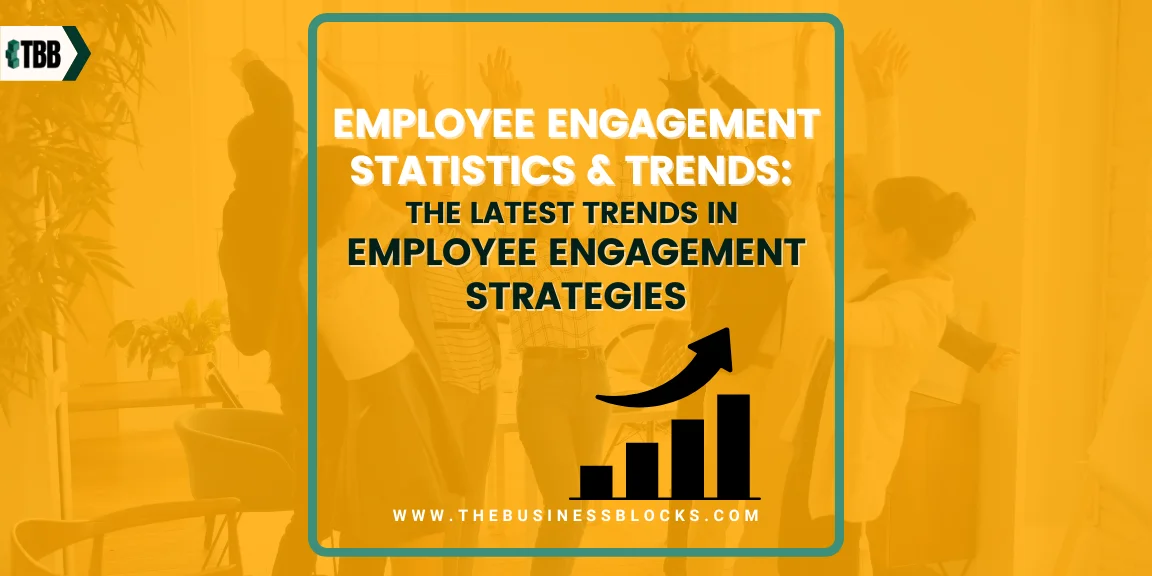Employees are the heart of any organization, and their engagement is essential for productivity. Without engaged employees, companies struggle to meet goals and stay competitive in an ever-changing market. But how do you measure employee engagement? And what strategies optimize it? Let’s explore the latest trends in employee engagement statistics and uncover ways to increase your workforce’s happiness!
Are you looking to build a strong team of engaged and loyal employees?
Employee engagement is not only important for any business but also essential to remain competitive. At the same time, employee engagement strategies can come with big challenges. Latest trends help companies stay ahead and understand what’s the best approach for each company’s unique workforce.
Harness the power of data-driven insights that empower you to make informed decisions on how best to engage your employees — while inspiring positive change throughout your organization. Make sure you have access to all the latest industry statistics and trends so that making these decisions becomes easy!
Did you know?
- According to new research of more than 600 US businesses with 50-500 employees, 63.3% of companies say retaining employees is actually harder than hiring them.
- workers in Southeast Asia report the highest levels of engagement, up to 33% from 26%.
- 73% of employees are deliberating on quitting their jobs.
Overview of Employee Engagement Statistics & Trends

Employee Engagement Statistics and trends refer to the latest data from industry surveys, reports, and studies that provide insight into how employees feel about their jobs. It involves analyzing the behaviors of individuals in an organization to identify opportunities for improvement.
The latest employee engagement statistics and trends provide valuable insights into the success of different strategies. For example, some studies show that companies with higher levels of employee engagement are more likely to exceed their financial targets than those with lower scores.
Additionally, research suggests that employees who feel engaged at work are more productive, have higher job satisfaction and retention rates, and are less likely to take sick leave or quit. Companies with higher employee engagement scores also tend to have happier customers and better customer service experiences.
Companies that regularly measure employee engagement are more likely to identify and address any issues quickly, as well as provide targeted solutions for improvement. This ensures a stronger, more productive team who are committed to delivering your organization’s goals and business success.
Benefits of Employee Engagement Strategies
Actively engaged employees are essential to any organization. Employee engagement strategies help create an environment of trust and loyalty where employees feel valued and appreciated.
Some of its benefits and advantages include
- Increased employee morale and productivity.
- Reduced turnover rate.
- Higher customer satisfaction and loyalty.
- Improved communication between employees, customers, and management.
- Increased ROI due to improved teamwork and collaboration.
- Greater creativity among the team members.
Types of Employee Engagement Strategies

From company culture, the employee engagement initiatives to communication, there are many types of employee engagement strategies. Here are some of the most popular ones:
Employee Recognition Programs
- A great way to show your employees that you appreciate their hard work and dedication is by offering rewards or recognition programs for exemplary performance.
Training Opportunities
- Investing in employee development can help keep them engaged and motivated. Offering training opportunities, such as webinars or workshops, can help employees learn new skills and stay current with industry trends.
Flexible Working Hours
- Giving your team flexible work hours could be a great way to improve their job satisfaction. This will also allow them to manage their time better and focus on tasks that are the most important for each individual.
Employee Engagement Surveys
- This is a great way to get feedback from employees on what’s working and what isn’t. It can also help you identify issues and create solutions that will increase engagement levels within the team.
Team Building Activities
- Getting your team together for activities, such as team lunches, outings, or charity events, can help foster better relationships between colleagues. This will also strengthen team spirit and morale.
Work-life balance
- Employers need to create a work-life balance for their employees. Allowing them to have flexible hours, or take time off when needed, can help reduce stress and improve productivity in the workplace.
Compensation and benefits
- Engaged teams need to feel valued and appreciated for their hard work. Offering competitive salaries, bonuses, and benefits can help attract and retain top talent.
Career Advancement Opportunities
- Highly engaged employees need to feel that they are progressing in their careers. Offering career advancement opportunities and training can help provide employees with the necessary skills needed to move up within the company.
How to Measure the Impact of an Employee Engagement Strategy
The employee engagement rates and employee engagement statistics matter – but how do you measure the impact of an employee engagement strategy?
Analyzing employee feedback and using key performance indicators (KPIs) can help you track progress.
KPIs such as:
- Employee retention or turnover rate.
- Absenteeism.
- Team collaboration ratings.
- Customer satisfaction score, and productivity.
All mentioned above be used to measure the success of your employee engagement strategy. By measuring the impact of your employee engagement strategy, you can identify areas for improvement and adjust your approach accordingly.
How Technology Can Help Support Effective Employee Engagement Strategies

Improving employee engagement is not an easy task, but technology can help make it easier. Tools such as our Top 10 employee engagement software and team collaboration tools can be used to measure employee engagement levels, provide feedback on how to improve, and track progress over time.
Companies are also finding ways to use gamification techniques to drive better performance in the workplace. From remote employees to a highly engaged workforce, gamification tools and reward systems can be used to encourage better collaboration and productivity.
Technology is an invaluable tool for improving employee engagement – but it’s important to remember that there isn’t a one-size-fits-all solution. Companies need to find the right balance between technology and traditional methods of employee engagement to get the best results.
Understanding the Role of Leadership in Increasing Employee Engagement
Disengaged employees are more likely to be found in companies that have poor leadership. Leaders need to be aware of their role in creating an environment where employees feel valued and appreciated.
Leaders should take the time to get to know their team members, understand their goals and objectives, offer support, and provide feedback regularly.
Leaders need to ensure the following:
- Employees feel heard and respected.
- Everyone is held accountable for their actions.
- A supportive atmosphere for employees to thrive in.
- An open, collaborative environment where people can give and receive feedback without fear of being judged or punished.
- Clear communication between all levels of the organization.
- Open recognition of hard work and accomplishments.
- Goal setting and performance tracking to track progress and help employees stay motivated.
Leaders play a key role in motivating their teams and creating an environment where employees feel valued and engaged. By taking the time to understand their team members’ needs, providing support when needed, and fostering collaboration among all levels of the organization, leaders can help create a company culture that discourages employee disengagement.
Creative Ways to Encourage Employee Engagement

Below are the creative ways you can use to encourage employee engagement:
- Providing employees with rewards and recognition.
- Offering regular team-building activities.
- Having a strong ethos of open communication.
- Supporting employee career development goals.
- Making sure employees have clear job expectations.
- Encouraging feedback from employees about their roles and celebrating successes.
- Offering tailored individual motivation programs.
Tips on Measuring Success & Showcasing Results – Using Metrics to Evaluate Your Strategy
Engaged employee success should be measured in terms of how it affects the business, rather than simply counting the number of engaged employees.
When evaluating your employee engagement strategy, try to measure the following metrics:
- Employee retention rate.
- Customer satisfaction scores.
- Profit margins.
- Productivity levels.
- Employee feedback loops.
- Team collaboration and communication rates.
- Level of employee satisfaction and engagement.
Frequently Asked Questions About Employee Engagement Statistics & Trends
Q: Do Actively disengaged employees or low employee engagement affect a company’s bottom line?
A: Yes, research has shown that actively disengaged employees can hurt customer satisfaction rates and overall business performance. Companies should focus on creating an environment where all employees feel valued and engaged to avoid potential losses in productivity and profits.
Q: What are some trends in employee engagement strategies?
A: Companies are increasingly leveraging technology to measure and track employee engagement levels, give feedback on how to improve, and reward employees for their efforts. Gamification is becoming an increasingly popular trend in employee engagement strategies as it can be used to motivate employees and encourage better collaboration.
Conclusion
Employee engagement is an invaluable asset for any business. The benefits associated with having a satisfied and motivated workforce are undeniable. There are many strategies to maintain employee engagement, which should be tailored depending on the demographics of the workforce and the unique needs of the organization.
With proper strategy planning and implementation, organizations can cultivate a fruitful working environment through enhanced employee engagement strategies that benefit both employers and employees alike.

